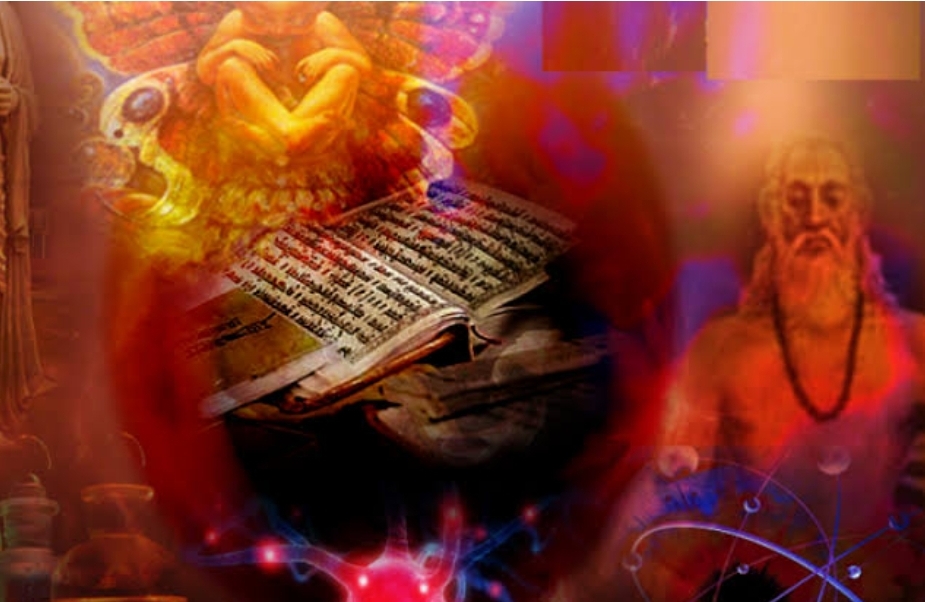The Mystical 11 Natural Forces in the Rigveda
The Rigveda, one of the oldest religious texts in the world, contains hymns that not only praise deities but also celebrate and invoke various natural forces and phenomena. These hymns reflect the deep connection that the Vedic people had with the natural world and their understanding of the divine within it. Here are some natural forces and elements mentioned in the Rigveda:
1. Agni (Fire):
– **Significance:** Agni is a central deity in the Rigveda, representing fire, the vital force of life, and the divine presence in rituals. Fire is seen as a purifying and transformative element.
– **Role:** Agni is the carrier of offerings from humans to the gods. He is invoked at the beginning of rituals and is central to Vedic ceremonies such as yajnas (sacrificial rituals).
2. Indra (Rain and Thunderstorms):
– **Significance:** Indra is the king of the gods and a powerful deity associated with storms, particularly thunder and rain.
– **Role:** He is celebrated for bringing rain, which is essential for the fertility of the land. Indra’s actions in defeating the demon Vritra and releasing the rains are a common theme in Rigvedic hymns.
3. Ushas (Dawn):
– **Significance:** Ushas is the goddess of dawn, symbolizing the arrival of light and the dispelling of darkness.
– **Role:** Hymns dedicated to Ushas describe her as radiant, beautiful, and a herald of a new day. She is associated with hope and the awakening of the world.
4. Varuna (Cosmic Order and Waters):
– **Significance:** Varuna represents cosmic order (rita) and is also associated with the waters, including the celestial waters.
– **Role:** He is invoked for forgiveness and protection. Varuna’s role in upholding order and justice is emphasized in Rigvedic hymns.
5.Apsaras (Water Nymphs):
– **Significance:** Apsaras are celestial nymphs associated with water bodies, particularly rivers and lakes.
– **Role:** They are sometimes mentioned in the Rigveda as beings of beauty and grace who inhabit the watery realms.
6. Surya (Sun):
– **Significance:** Surya represents the sun, the source of light and life.
– **Role:** Hymns dedicated to Surya praise the sun’s life-giving and illuminating qualities. The Gayatri mantra, dedicated to Surya, is a famous Rigvedic hymn.
7. Maruts (Storm Gods):
– **Significance:** The Maruts are a group of storm gods associated with natural forces like wind and rain.
– **Role:** They are often depicted as powerful and youthful deities riding on the clouds. Hymns celebrate their dynamic and energetic nature.
8. Rita (Cosmic Order):
– **Significance:** Rita represents the cosmic order or natural law that governs the universe.
– **Role:** Hymns mention Rita in the context of maintaining balance and order in the world. It is associated with truth and righteousness.
9. Vayu (Wind):
– **Significance:** Vayu is the god of wind, symbolizing the life-sustaining force of air.
– **Role:** He is invoked for his vital role in the natural world and is associated with breath and life force.
10. Prithvi (Earth):
– **Significance:** Prithvi is the goddess of the earth, symbolizing stability and fertility.
– **Role:** She is considered the mother of all living beings and is praised for her abundance and support.
11. Soma (Sacred Plant):
– **Significance:** Soma is a sacred plant that plays a significant role in Vedic rituals, symbolizing divine inspiration.
– **Role:** While not a natural force, it is often mentioned in hymns and is central to certain rituals, symbolizing spiritual nourishment.
These natural forces and elements, along with their associated deities and concepts, are woven into the fabric of the Rigveda, reflecting the ancient Vedic people’s deep reverence for the natural world and their understanding of the divine within it.
These natural forces and elements are not only recognized and revered in the Rigveda but are also seen as interconnected with the divine. The hymns dedicated to these forces reflect the Vedic people’s deep appreciation for the natural world and their recognition of the spiritual and divine aspects present in it.


